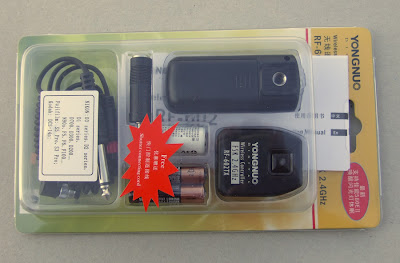When I set the lens to 50mm and set iso 200 , 1/200th sec and F11 [ A good 'average' setting for a sunny day with a bit of haze ] the flash tells me I have 5.7m working distance which is actually the maximum distance it could fully light the subject , just as fill flash you could probably double that distance .
This is the flash pattern at 50mm zoom and 1/16th power .
With the diffuser dome fitted the camera tells me I now have 2m working distance which equates to 1/8th of the original flash power actually hitting the subject . This is its pattern .
Then with the wide angle diffuser out we have 2.5m or 1/5th of the original power which is a bit better than the diffuser dome - and this is its pattern .
In my mind it would be better to use the wide diffuser when firing into an umbrella .
With indoor flash you would be working with wider apertures and letting in more light so I suppose the diffuser dome would have its uses there since the light going sideways will add to the exposure when it bounces .
I don't see much use in having the diffuser dome on outdoors since just about everything that hits the subject will be direct light anyway so direct flash when using fill makes more sense to me - and the diffuser dome will use 8X the battery power for the same lighting .
Now have a look at this comparison . This afternoon I decided to see how much of the flash power is wasted outdoors with nothing to bounce off . I fired the flash at 1/500th and F14 with my D50 and the Yongnuo 602 kit mounted on my D90 - the second shot was at F25 .
I had the lens on the test camera fully framing the sideways calendar - anything outside the calendar is wasted flash .
It would appear that making the flash head rectangular has worked out to be counter-productive in that it creates a diamond pattern at a 45 degree angle to the subject !
I would also imagine that by making a reflective 'snoot' around the flash head that bounces this wasted pattern back to the subject we would get a much better diffusion effect than by putting on the diffuser dome which has almost exactly the same area as the flash head itself anyway - I reckon we could also have close to twice the flash power hitting the subject considering how much falls outside the frame .






















